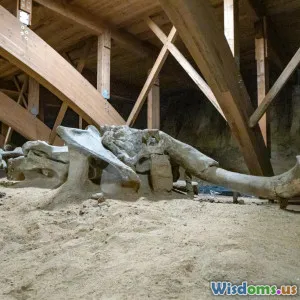
Cultural Heritage and its Evolution
6 min read Explore the dynamic journey of cultural heritage and its significance in modern society. (0 Reviews)
Cultural Heritage and its Evolution
Cultural heritage encompasses the traditions, customs, artifacts, and values that define our social fabric. As societies evolve, so too does the cultural heritage that shapes their identities. Understanding this evolution is crucial for appreciating how communities adapt and thrive in an ever-changing world.
The Definition of Cultural Heritage
Cultural heritage can be divided into two main categories: tangible and intangible.
- Tangible heritage includes physical artifacts such as monuments, buildings, artworks, and historical sites. These items provide material evidence of our past and often attract tourism and research interest.
- Intangible heritage, on the other hand, consists of practices, representations, expressions, knowledge, and skills that communities recognize as part of their cultural heritage. This includes oral traditions, performing arts, rituals, and culinary practices.
Both forms of heritage are essential in maintaining cultural diversity and fostering a sense of identity and belonging among communities.
The Historical Context of Cultural Heritage
Historically, cultural heritage has been shaped by various factors including migration, colonization, and globalization. These forces have led to the exchange and fusion of cultural practices across different societies. For instance, the Silk Road facilitated the transfer of art, religion, and technology between the East and West, leading to the enrichment of various cultures.
Additionally, colonialism often resulted in the suppression of indigenous cultures, leading to the loss of traditional practices and languages. However, in the latter half of the 20th century, there has been a resurgence of interest in preserving and revitalizing indigenous and local cultures, driven by a recognition of their importance in our collective history.
The Role of Technology in Cultural Evolution
With the advent of technology, the way cultural heritage is experienced and preserved has changed dramatically. Digital platforms allow for the documentation and sharing of cultural practices on a global scale. For example, social media has enabled performers to reach international audiences, while virtual reality can recreate historical sites that may no longer be accessible.
Moreover, technology has facilitated the preservation of intangible heritage. Online platforms such as YouTube and TikTok showcase traditional music and dance, attracting younger generations and keeping these practices alive. However, the challenge remains to balance technological advancement with the authenticity of cultural expressions, ensuring that heritage is not merely commodified.
The Importance of Cultural Heritage in Society
Cultural heritage plays a vital role in promoting social cohesion and fostering community identity. It serves as a source of pride and belonging for individuals, enhancing their connection to their roots. Moreover, cultural heritage can be leveraged for economic development through tourism, providing financial incentives for communities to preserve their unique traditions.
In an increasingly globalized world, the protection and promotion of cultural heritage are fundamental in combating cultural homogenization. By valuing diversity and recognizing the significance of different cultural expressions, societies can foster greater understanding and appreciation among their members.
Challenges in Preserving Cultural Heritage
Despite its importance, preserving cultural heritage faces numerous challenges. Rapid urbanization and globalization can lead to the erosion of local traditions, as modern lifestyles overshadow traditional practices. Additionally, political conflicts and environmental changes can threaten heritage sites, making preservation efforts more urgent.
Organizations such as UNESCO work tirelessly to promote and safeguard cultural heritage globally, advocating for policies that protect both tangible and intangible heritage. Collaborative efforts involving local communities, governments, and international organizations are essential in ensuring the sustainability of cultural practices.
Conclusion
Cultural heritage is a living testament to our shared human experience, continuously evolving while providing a sense of continuity and identity. By understanding its evolution, we can better appreciate the complexities of our societies and the importance of preserving our diverse cultural expressions. As we move forward, it is crucial to recognize that cultural heritage is not merely a relic of the past, but a dynamic force shaping our future.
In embracing the evolution of cultural heritage, we foster a richer, more inclusive society that values diversity and promotes mutual respect and understanding.
Rate the Post
User Reviews
Popular Posts





















